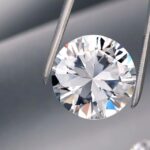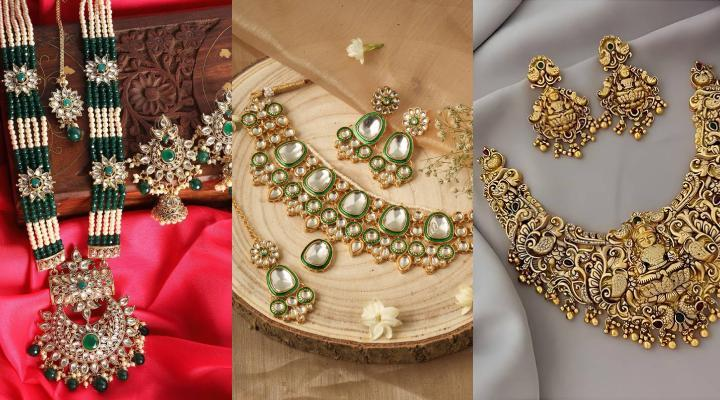Moissanite is a gemstone that has gained increasing popularity in recent years, especially as a more affordable and ethical alternative to diamonds. With its dazzling brilliance and exceptional durability, it’s no wonder that moissanite is now featured in engagement rings, jewelry, and even watches. Whether you’re considering it for an upcoming purchase or simply want to learn more, this guide will take you through everything you need to know about Moissanite.
What is Moissanite?
Moissanite is a rare mineral composed of silicon carbide. It was first discovered in 1893 by French chemist Henri Moissan when he found it in a meteor crater in Arizona. Initially, the stone was so rare that it could only be found in small amounts, and scientists weren’t sure if it could even be used in jewelry.
Today, Moissanite is primarily created in a laboratory, making it widely accessible to consumers. Modern Moissanite is virtually identical to the natural variety but is much more affordable and sustainable. The majority of Moissanite used in jewelry is lab-grown, which eliminates concerns about the environmental and ethical impacts of mining.
Why Choose Moissanite?
- Brilliance and Fire
One of Moissanite’s standout features is its incredible brilliance. It has a higher refractive index (2.65) than diamonds (2.42), meaning it reflects more light and exhibits more fire, or color flashes, as the stone catches the light. This results in a sparkle that many find even more dazzling than diamonds. - Durability
On the Mohs scale of hardness, Moissanite ranks 9.25, which is just below diamonds (ranked at 10). This makes Moissanite incredibly durable, resistant to scratches, and suitable for daily wear, especially in engagement rings and other frequently worn jewelry. - Affordability
Moissanite is significantly more affordable than diamonds. It’s possible to get a larger Moissanite stone for a fraction of the price of a diamond of similar size and appearance. This makes Moissanite an attractive option for those looking to maximize their budget without sacrificing beauty. - Ethical and Sustainable
Unlike diamonds, which often come with concerns about the environmental and human costs of mining, Moissanite is a lab-created gemstone. This means it’s an eco-friendly choice, and its production doesn’t contribute to the environmental damage associated with traditional mining methods.
Moissanite vs. Diamonds: Key Differences
While Moissanite and diamonds might look similar at first glance, they have some important differences:
- Brilliance: Moissanite outshines diamonds in terms of sparkle due to its higher refractive index.
- Hardness: Diamonds are the hardest natural material on Earth, ranking 10 on the Mohs scale, while Moissanite ranks 9.25. While Moissanite is still very durable, diamonds have a slight edge when it comes to scratch resistance.
- Color: Most diamonds are colorless or near-colorless, but they can have slight tints, such as yellow or brown. Moissanite, on the other hand, tends to have a warmer, slightly yellow or greenish hue. However, higher-quality Moissanite is virtually colorless, and some brands create stones that resemble diamonds in their color.
- Price: Moissanite is much more affordable. For the price of a small diamond, you can often buy a much larger Moissanite stone, making it an excellent option for those on a budget or who want to invest in a larger gemstone.
Types of Moissanite
- Classic Moissanite:
The traditional Moissanite stones are colorless or near-colorless and are cut in similar shapes to diamonds (round, princess, oval, cushion, etc.). These stones offer the brightest and most intense sparkle, making them a popular choice for engagement rings. - Forever One Moissanite:
This is a premium quality Moissanite brand created by Charles & Colvard, one of the leading manufacturers of Moissanite gemstones. The Forever One Moissanite is specifically designed to offer a colorless appearance, closely mimicking a high-quality diamond. - Treated Moissanite:
Some Moissanite stones undergo a special treatment to improve their color or overall appearance. The result is a gemstone that may look whiter and brighter but is still created with the same silicon carbide material.
Caring for Moissanite Jewelry
Moissanite is durable, but like all jewelry, it requires proper care to keep it looking its best:
- Cleaning:
Clean Moissanite stones regularly with a soft cloth to remove oils and dirt. For a deeper clean, use warm water and mild dish soap. Avoid harsh chemicals, as they may damage the stone or the metal setting. - Storage:
Store Moissanite jewelry in a safe place, such as a jewelry box or a padded cloth, to protect it from scratches or damage. While Moissanite is quite hard, it’s still a good idea to store it separately from other jewelry to prevent any scratches. - Avoid Impact:
Although Moissanite is durable, avoid hitting it against hard surfaces to prevent chipping or cracking. Even the hardest gemstones can suffer damage if they’re exposed to strong enough forces.
Is Moissanite the Right Choice for You?
Moissanite is an excellent choice for anyone looking for a beautiful, durable, and affordable gemstone. If you love the sparkle of a diamond but are conscious of price or ethical concerns, Moissanite offers a compelling alternative. Whether you’re buying an engagement ring, a pendant, earrings, or a watch, Moissanite can provide you with the look and feel of luxury without the high price tag.
Conclusion
Moissanite is a stunning gemstone that offers incredible brilliance, durability, and affordability. With its eco-friendly, lab-created nature, it appeals to consumers looking for an ethical alternative to diamonds. Whether you’re in the market for an engagement ring or simply want a dazzling piece of jewelry, Moissanite is a beautiful, sustainable, and cost-effective choice that rivals even the most precious stones.










